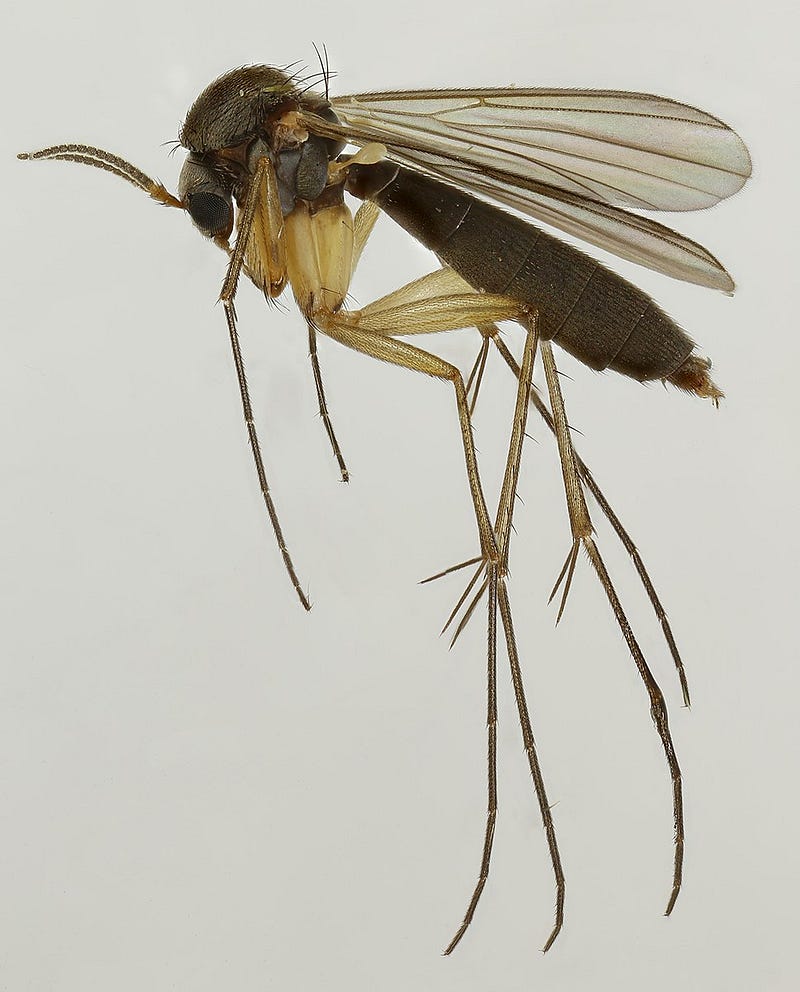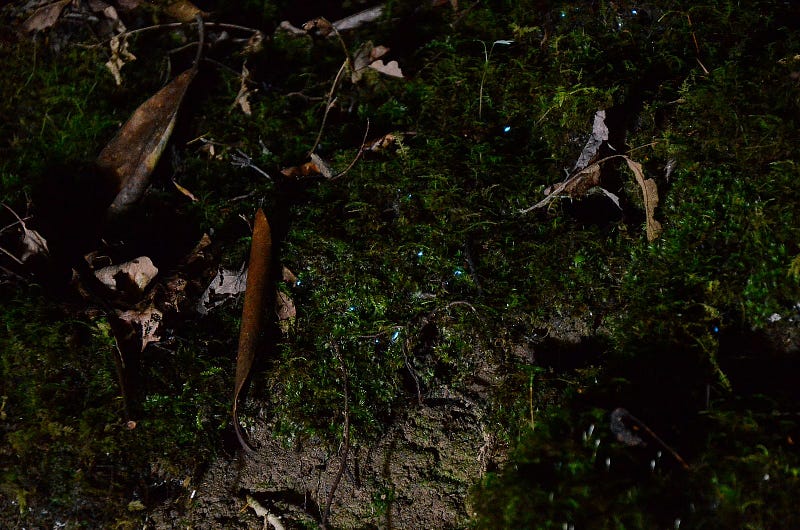
We’ve previously looked at bioluminescent mimicry for predation purposes in fireflies, and this week we’ll be looking at another sort of insect, an actual fly. Despite the name, fireflies belong to the Order Coleoptera, the beetles. True flies, such as the house fly and all the various species of mosquitoes, belong to the order Diptera (from the Greek for ‘two wings’ as they have a pair of flight wings and a second pair of vestigial hind wings for balance).
The larvae of some insects can possess bioluminescence and are often referred to by the catch-all term ‘glowworm’. They are not worms, but simply immature and not fully developed forms of insects. Many of these are beetles, by there are also a small number of bioluminescent larval flies known as fungus gnats (there are thousands of species of fungus gnats, like the adult pictured below, but only about a dozen actually glow).

These gnats primarily feed on fungi during their larval stage (as adults, they are often short-lived, simply living long enough to reproduce). A few, however, have predatory larvae. This is true for one of the more well-known species of bioluminescent fungus gnats, the New Zealand glowworm, Arachnocampa luminosa. It dwells primarily in cave systems. The strands that you see hanging down in the top picture and the one below are actually silk threads hung by the larvae. The droplets are actually mucus secretions, an enhancement to the stickiness of the snares. They take advantage of the natural phototaxis (the tendency to move either towards or away from light) instinct in many arthropods by emitting their bioluminescent glow and waiting for prey to fly into their snares. The genus name for these flies means ‘spider-worm’ because their predation mimics a spiderweb and their physical form in this stage of development is worm-shaped.

Arachnocampa are only found in Australia and New Zealand, but a distantly related species can be seen in the southern Appalachian Mountains and the Cumberland Plateau in North America. Orfelia fultoni is also primarily a cave dweller that spins a web and uses bioluminescence to attract prey into it. Both of these species are also known for the degree of blue color present in their glow (most insects tend towards a more greenish bioluminescent color).

This predation strategy uses bioluminescence quite differently than either the firefly from Season 4, which enticed prey with a mate, or the anglerfish from a few weeks ago, which did so with the promise of food. Instead, the larval gnats are taking advantage of something even more primal than the need to eat or to reproduce. Whether or not a species approaches light, especially for invertebrates, is highly instinctual and often hardwired into its behavioral patterns. While the majority of their relatives feed on fungi and thus do not need to glow, the predatory fungus gnats take advantage of these behavioral tendencies and create a situation where prey will come to them. The light level of the bioluminescence will even shift with the fly’s hunger, getting brighter the longer it has been without a meal. The bioluminescent fungus gnats can continue to glow as the develop further from the larva stage, at least for some species, but the light tends to fade as its purpose is gone and the trait has become vestigial, even detrimental, serving only to attract potential predators.
Next week, it’s time to return to the depths of the oceans, but this time we won’t be looking at a fish. I hope you are enjoying our journey back and forth to look at various organisms that glow. As always, please feel free to leave a response with what you think of my stories and please like and share them with others you think might appreciate them.